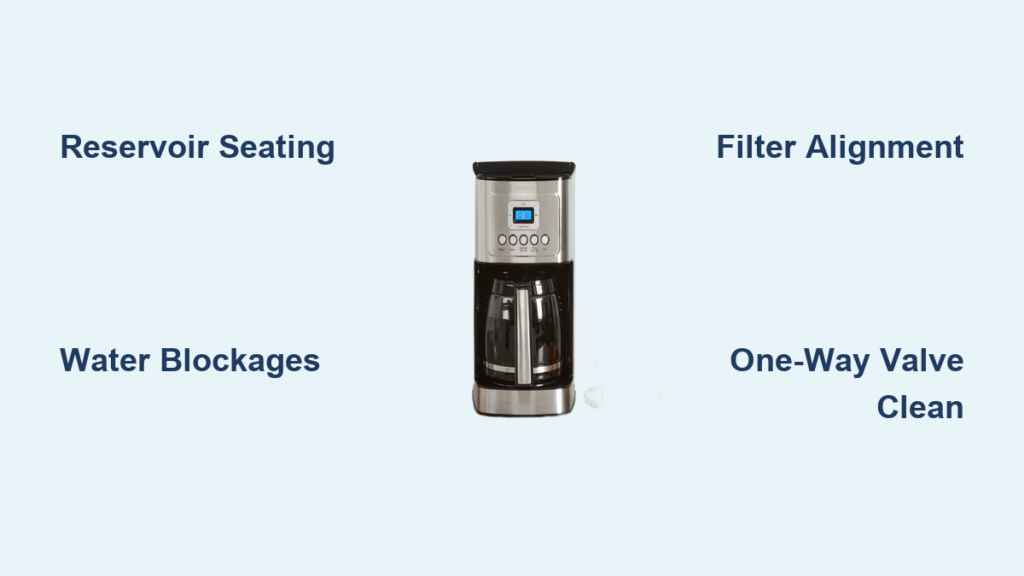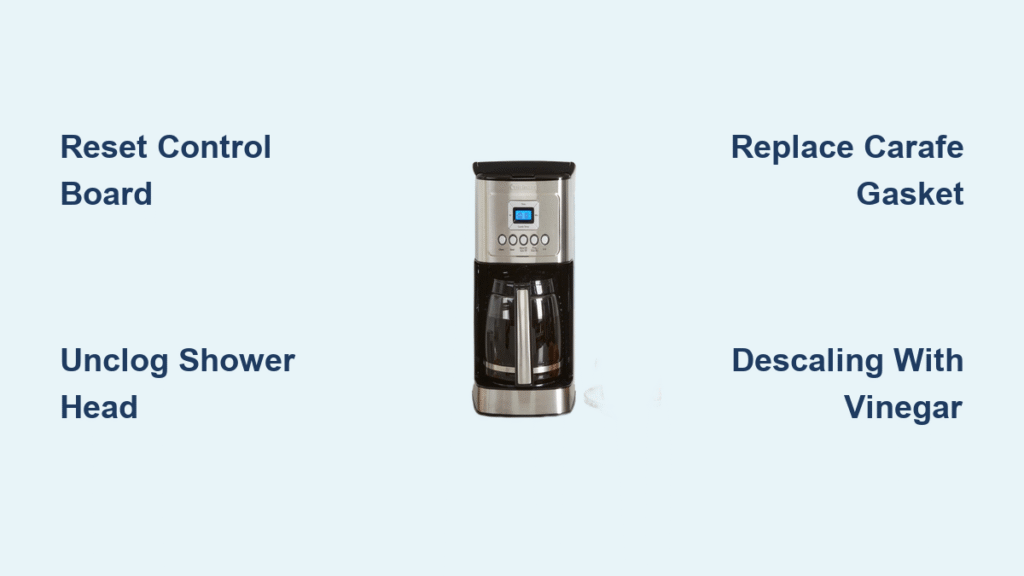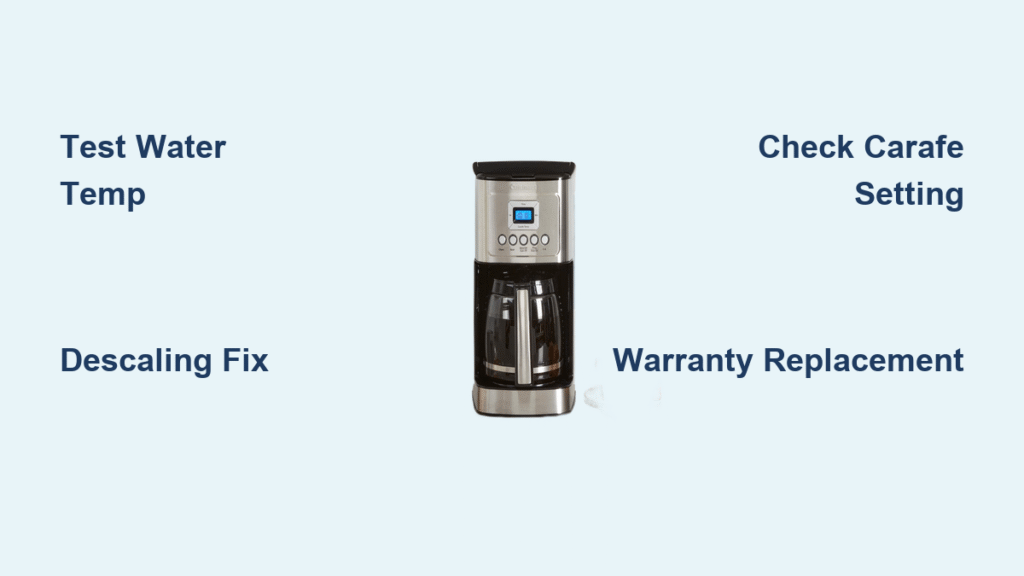Your Cuisinart ice cream maker hums to life, but the paddle sits motionless while your mixture stays stubbornly liquid. Or perhaps the paddle spins vigorously yet your dessert remains soup-like instead of scoopable. If your Cuisinart ice cream maker not churning properly, you’re facing one of two distinct failure categories that 95% of owners misdiagnose. This guide cuts through the confusion with model-specific fixes verified by Cuisinart’s technical specifications—no more wasted ingredients or summer dessert disasters. You’ll learn exactly why your 30 BC’s belt slips off the white peg or why your ICE-70 fails in hot weather, plus step-by-step solutions that work on the first try.
Motor Running But Paddle Won’t Spin: Mechanical Breakdown Fixes

When your Cuisinart’s motor whirs loudly but the paddle remains frozen in place, you’re dealing with a power transmission failure. This isn’t a motor defect—it’s almost always a preventable mechanical disconnect between the motor and mixing mechanism. The fix depends entirely on your model’s unique design, so identifying your unit is step zero.
30 BC Model Belt Misalignment Crisis
The 30 BC 2-quart model’s grey belt frequently slips under the white peg instead of resting securely on top, instantly killing power transmission. This happens after just one year of regular use when the belt stretches from temperature fluctuations.
Immediate Belt Repair Protocol:
1. Unplug and flip your unit to access the base
2. Remove 4 bottom screws with a Phillips screwdriver
3. Locate the grey belt—if it’s dangling beside or under the white peg, that’s your problem
4. Reposition the belt by stretching it over the white peg until it clicks into place
5. Reattach the cover and test with an empty bowl
Critical Visual Check: Properly seated, the belt should rest horizontally across the peg with no twisting. If it snaps off immediately when testing, the belt has stretched beyond repair and needs replacement ($12-25).
Drive Coupling Failure: The Silent Killer

This star-shaped plastic component connects your motor shaft to the paddle. When it cracks or strips teeth—which happens after 50+ churning cycles—you get motor noise without movement. This affects all Cuisinart models but is especially common in 3+ year old units.
Coupling Failure Red Flags:
– Visible hairline cracks radiating from the center
– Stripped teeth where the paddle inserts (feels loose when wiggled)
– Motor stalling when you press the paddle down during operation
– Complete silence from the paddle mechanism despite motor noise
Replacement Reality: New couplings cost $8-20 and install in 7 minutes. Order part # CJC-1100 before summer—delayed shipping during peak season leaves you without fixes when you need them most.
Paddle Placement Reality Check
Here’s what stumps most owners: your paddle isn’t meant to attach permanently. On 30 BC and similar models, it’s designed as a loose component that sits freely in the bowl. If you’re trying to “tighten” it, you’re wasting time—this symptom always points to belt or coupling failure instead.
Pro Tip: Before disassembling anything, lift the paddle out and reinsert it firmly. If it wobbles excessively, your coupling is already damaged and needs replacement.
Mixture Liquid Despite Churning: Temperature Management Fixes
When your paddle spins but your mixture stays thin, you’re battling physics—not mechanical failure. The Cuisinart system relies entirely on pre-frozen components to pull heat from your mixture. Skip critical temperature steps, and you’ll get soup every time.
The Non-Negotiable 12-Hour Bowl Freeze Rule

Your double-walled freezer bowl must achieve -18°C (0°F) throughout its entire structure, not just on the surface. Many users think “overnight” (8 hours) suffices, but Cuisinart’s specs require 12 continuous hours at freezer temperatures.
Bowl Freeze Verification Test:
– Shake the bowl—if you hear liquid sloshing, it’s not frozen solid
– Check for uneven frost—patchy frost means incomplete freezing
– Press the metal exterior—it should feel like solid ice, not cold metal
– In summer months or older freezers, extend to 15-18 hours
Critical Mistake: Storing the bowl in the freezer door where temperatures fluctuate. Always keep it in the main compartment’s back wall for consistent freezing.
Ingredient Temperature Sabotage
Even with a perfectly frozen bowl, warm ingredients overwhelm the system. The machine mixes but doesn’t chill—your mixture must enter the bowl already at 4°C (40°F) or colder.
Temperature Rescue Protocol:
1. Chill your mixture in the refrigerator for 4+ hours (not just 30 minutes)
2. Verify temperature with a food thermometer before churning
3. Work quickly when transferring mixture to the bowl—every 30 seconds at room temperature costs 5 minutes of freezing capacity
4. During heat waves, place the bowl in an ice-water bath while assembling ingredients
Proven Fix: One user solved chronic failure by storing ingredients in the freezer for 20 minutes before refrigeration—this dropped mixture temperature to 2°C (36°F), triggering instant thickening.
High-Temperature Operation Workarounds
Ambient heat above 27°C (80°F) drains your bowl’s cooling capacity 40% faster. The ICE-70 model is especially vulnerable in summer kitchens.
Heat Wave Survival Tactics:
– Churn at 6 AM or 10 PM when ambient temperatures drop
– Run AC or place a fan blowing across the machine
– Reduce batch size by 25% to decrease thermal load
– Pre-chill the mixing bowl lid in the freezer
– Never open the lid during the first 15 minutes of churning
5-Minute Diagnostic Decision Tree
Motor Spinning Failures: Step-by-Step Isolation
- Paddle test: Remove and reinsert firmly—if wobbly, coupling is shot
- Belt check (30 BC): Flip unit—belt must sit on top of white peg
- Empty bowl test: Run without mixture—if paddle spins, your ingredients are too warm
- Coupling inspection: Remove paddle and check star-shaped connector for cracks
- Component swap: Try a known-good paddle if available
Liquid Mixture Emergencies
- Bowl shake test: No liquid sloshing = insufficient freeze time
- Mixture thermometer check: Must be ≤4°C (40°F) before churning
- Freezer verification: Use an appliance thermometer to confirm -18°C (0°F)
- Ambient temperature assessment: Postpone churning if kitchen >27°C (80°F)
- Lid discipline audit: Did you peek during critical first 15 minutes?
Component Replacement Made Simple
Most-Failed Parts & Fixes
Paddle Assembly Failure Signs: Bent blades, visible cracks, or stripped drive connection. Replace immediately—continued use damages the coupling. Cost: $15-35 (order model-specific version).
Drive Coupling Death Spiral: Starts with intermittent spinning, progresses to complete failure. Replacement takes 5 minutes: remove old coupling, press new one onto motor shaft until seated. Cost: $8-20.
30 BC Belt Kits: Includes new belt and alignment tool. Critical for models over 1 year old. Install during spring maintenance to avoid summer failures. Cost: $12-25.
Pro Tip: Keep a spare paddle and coupling in your ice cream kit—Cuisinart’s 24-48 hour shipping during peak season means weeks without dessert if you wait for parts.
Daily Maintenance That Prevents 90% of Failures
The 3-Minute Post-Use Routine
- Immediate rinse with cold water to prevent dairy buildup in paddle grooves
- Hand-wash only—dishwasher heat warps plastic components
- Air-dry upright for 24 hours before storage to prevent ice formation
- Store bowl in freezer (not cabinet) for spontaneous churning
- Wipe motor base with damp cloth to remove sugar residue
Summer-Ready Annual Prep
- Replace drive coupling every May regardless of visible damage
- Verify freezer temperature with appliance thermometer (-18°C/0°F minimum)
- Deep-clean paddle shaft with vinegar solution to remove mineral deposits
- Test bowl freeze time using a stopwatch—adjust for your freezer’s performance
When to Abandon DIY Repairs
Motor Failure Emergency Signs:
– Burning electrical smell during operation
– Motor cutting out after 2 minutes of use
– Visible smoke from base unit
– Repeated coupling/paddle failures within 3 months
Professional Service Reality: Motor replacement costs $75-120—often exceeding the price of a new unit. Cuisinart designs most models for component replacement, not motor repair. If your unit is under warranty, contact support immediately; for older models, budget for replacement.
Key Takeaway: Your Cuisinart ice cream maker not churning always falls into mechanical failure (fixable with belt/coupling adjustments) or temperature failure (solved by strict adherence to 12-hour freezing and pre-chilled ingredients). Master these two protocols, perform the 3-minute daily maintenance, and you’ll transform summer’s sweetest failures into perfect, scoopable success—all without professional help. For immediate relief, download our printable troubleshooting checklist at [Internal Link: Cuisinart Ice Cream Maker Quick Fix Guide].





